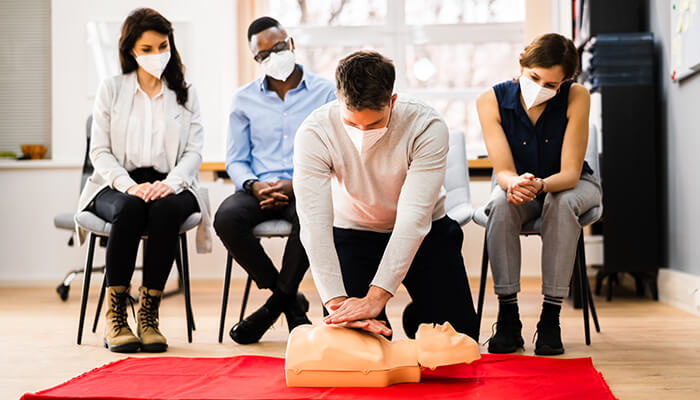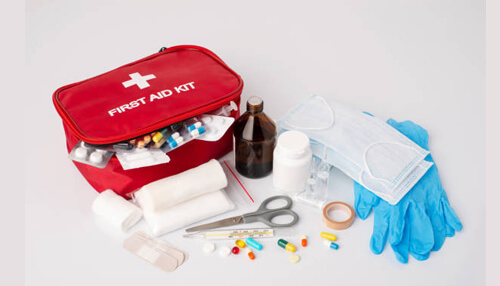All workplaces need to have a fully stocked first aid kit on hand at all times. Not only is this a legal requirement, but it may also potentially save someone’s life in an accident, before the emergency services arrive.
Within this article we will detail your first aid responsibilities as an employer, and what you need to keep in the workplace first aid kit to ensure it is ready to go at all times.
What are my legal responsibilities as an employer?
The Health and Safety Executive (HSE) has outlined that:
- The Management of Health and Safety at Work Regulations 1999 place an obligation on employers to assess risks and, where necessary, take action to eliminate or control the risks.
- The Health and Safety (First-Aid) Regulations 1981 require employers to provide adequate and appropriate equipment, facilities and personnel to ensure their employees receive immediate attention if they are injured or taken ill at work.
This means that it is your duty to have arrangements in place to provide first-aid to staff who are injured or become ill at work. Also, this applies regardless of how the situation was caused at work.
If you’re self-employed, you should make appropriate first aid arrangements for your working environment (even if you work from home).
What should be in a first aid kit?
To find out which kind of equipment you should keep in your work first-aid kit, you will need to carry out a first aid assessment.
The Mississauga First Aid training program provides essential life-saving skills to individuals. Through comprehensive courses, participants learn vital techniques such as CPR, wound care, and handling emergencies. These skills empower individuals to respond effectively in critical situations, whether at home, work, or in public spaces.
This should take into account the level and type of hazards, workplace environment and number of employees. If your workplace is open to members of the public, they will also need to be taken into consideration during the assessment process. Other factors to bear in mind include:
- Any pre-existing conditions and illnesses that your employees have
- The number of visitors to each of your premises
- Typical hazards found in any workplace, not just the ones specific to yours
- HSE’s specific guidance for the industry that you work in
A first aid kit should contain all the basic, necessary equipment needed to treat superficial injuries that don’t require emergency attention. This includes:
- Sterile dressings – including individually wrapped wound dressings or adhesive dressings and plasters
- Bandages – such as roller, triangular or tubular bandages
- A thermometer (preferably digital) – to take and record high body temperatures
- Personal protective items (PPE) – including gloves and/or a plastic face shield or pocket mask
- Cleansing alcohol-free wipes – to clean the skin around the wound
- Scissors – to cut bandages, sticky tape or someone’s clothing if you need to get to a wound
- Pins and clips – to fasten loose ends of bandages
Do employees need first aid training?
Skills and knowledge in First Aid can help you provide immediate care to those in need. A First Aid certification is useful for basic everyday problems like headaches and cuts, as well as more catastrophic crises like allergic reactions and seizures. As a minimum, there should at least be a designated person who looks over the first aid equipment, makes sure it’s all up to date, and is responsible for calling the emergency services if required.
With that being said, if your workplace handles hazardous or dangerous materials then it’s best if staff are formally trained on how to react and treat injuries. When deciding which of your staff members to train, you should think about:
- The nature of their work – what are the main hazards and how likely are they to pose a serious threat?
- Staff work patterns – it is best to train the full-time staff or those who are present the most, making sure that cover is provided when they are away.
- The organisation’s history – how many accidents have happened in the past and how likely are they to happen again?
- The practicality of the company location – how accessible is the area for emergency medical services and where is the nearest pharmacy or hospital in the event of an emergency?



